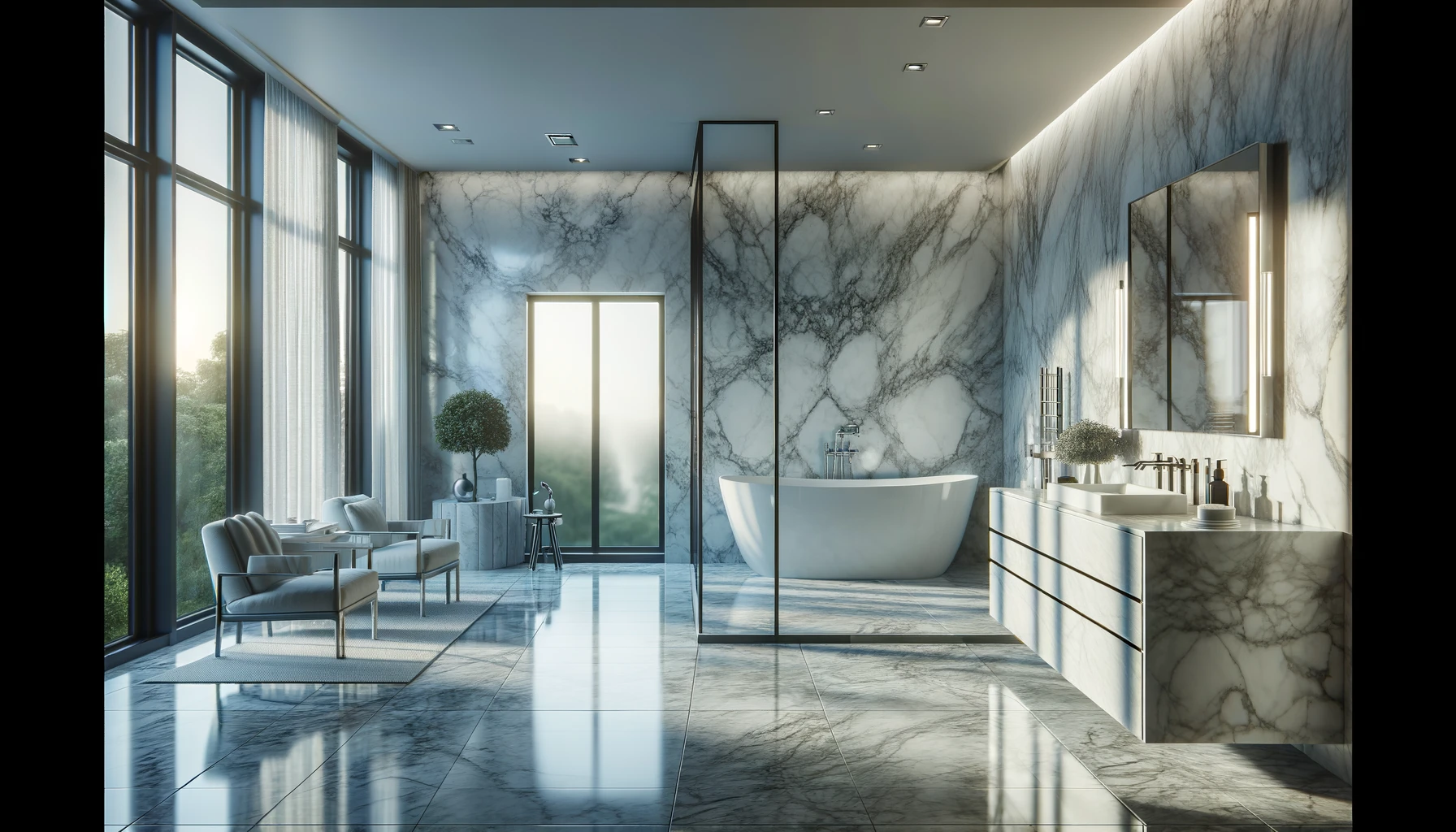A symbol of luxury, elegance, and timeless beauty, Carrara marble has adorned the homes, buildings, and artworks of humanity for millennia. Originating from the serene landscapes of Carrara, Italy, this precious stone has become a cornerstone in the world of architecture and design. In this extended exploration, we delve deep into the history, characteristics, applications, and the enduring allure of Carrara marble.
A Deep Dive into its Rich History
Origins in Ancient Rome The Carrara marble’s tale begins in the grandeur of Ancient Rome. The Romans, with their penchant for opulence, heavily utilized Carrara marble in both their architectural marvels and sculptural masterpieces. They recognized the marble’s aesthetic and functional attributes, making it an integral part of their cultural and architectural identity.
Renaissance Era: The Marble’s Golden Age Fast forward to the Renaissance period, the marble saw a resurgence in its demand. Iconic figures like Michelangelo sought Carrara marble for their masterpieces. Michelangelo’s David, a perfect amalgamation of art and raw nature, stands testament to the marble’s eternal charm.
Intricate Characteristics
The Unique Color Palette Carrara marble is predominantly characterized by its soft white to gray hue, accentuated with intricate, feathery veining that brings depth to its appearance. The subtle gradients of color across the stone can range from icy white to bluish-grey, making each slab distinct.
The Science Behind its Durability On the Mohs scale, marble scores a 3-5, reflecting its relative hardness. Its compact crystalline structure provides resilience, enabling it to withstand significant wear and tear. This characteristic durability makes Carrara marble a favorite for high traffic areas, promising longevity even with regular use.
The Journey from Quarry to Your Home
Mining Techniques Mining Carrara marble is a meticulous process. Skilled workers extract the marble using modern techniques, ensuring minimal wastage. Large blocks are quarried and transported to processing units.
Refinement and Polishing Once quarried, the marble undergoes several refinement phases. Cutting, polishing, and finishing processes transform the rough stone into gleaming slabs ready for architectural and artistic endeavors.
Differentiating Carrara from its Counterparts
Calacatta Marble While Carrara boasts subtle veining, Calacatta marble is recognized by its thicker, more prominent veining. The base of Calacatta is whiter, offering a stark contrast to its dramatic veins, often with golden tints.
Statuario Marble Another luxurious marble variant, Statuario has distinct, bold veining against an ultra-bright background. It’s considered one of the most precious marbles and is rarer than Carrara.
Crema Marfil Marble This is a beige marble variant from Spain. It doesn’t have the same whiteness as Carrara but is loved for its warm, homely appeal and consistent color profile.
Best Applications in Modern Design
Incorporating in Kitchens Carrara marble countertops are a favorite in modern kitchens. Their reflective surface amplifies light, making spaces appear larger and more radiant.
Beautifying Bathrooms From bathroom vanities to bathtubs, Carrara marble adds a spa-like luxury to bathrooms. Its waterproof nature makes it suitable for wet areas.
Transforming Living Spaces Beyond kitchens and bathrooms, Carrara marble is increasingly being used in living rooms, as fireplace surrounds, or as statement walls, bringing elegance to daily living.
Care and Preservation
Weekly Maintenance To maintain its luster, it’s essential to clean Carrara marble with a pH-neutral cleaner. Using soft cloths can prevent surface scratches.
Periodic Professional Care Over time, marble might require professional polishing to remove minor abrasions and restore its original shine.
Economic and Global Influence of Carrara Marble
Trade Dynamics The export of Carrara marble plays a significant role in Italy’s economy. Its global demand ensures that it remains a significant export product, influencing trade dynamics.
Price Fluctuations Due to its global demand and limited supply, Carrara marble prices have seen fluctuations. Factors such as quarry yields, international demand, and transportation costs play into its pricing.
Myths and Misconceptions Surrounding Carrara Marble Despite its popularity, many myths surround Carrara marble. Some believe it’s easily stained or excessively delicate. In truth, with proper care, Carrara marble can retain its beauty for generations.
In Conclusion: The Timeless Elegance
Carrara marble, with its intricate patterns, history, and global appeal, remains a testament to nature’s beauty and human craftsmanship. Its blend of aesthetics and functionality ensures that it will continue to grace our architectures and artworks for many more millennia.
FAQs
- Is Carrara marble ideal for outdoor use?
Yes, though it requires sealants to protect against weathering. - Why is Carrara marble more affordable than Calacatta?
Carrara is more abundant, while Calacatta, being rarer, commands a higher price. - Can Carrara marble be used for staircases?
Absolutely! Its durability makes it suitable for staircases. - What is the primary mineral in Carrara marble?
Calcite is the predominant mineral in Carrara marble. - Are there different grades of Carrara marble?
Yes, based on clarity, veining, and whiteness, Carrara marble is graded accordingly.



